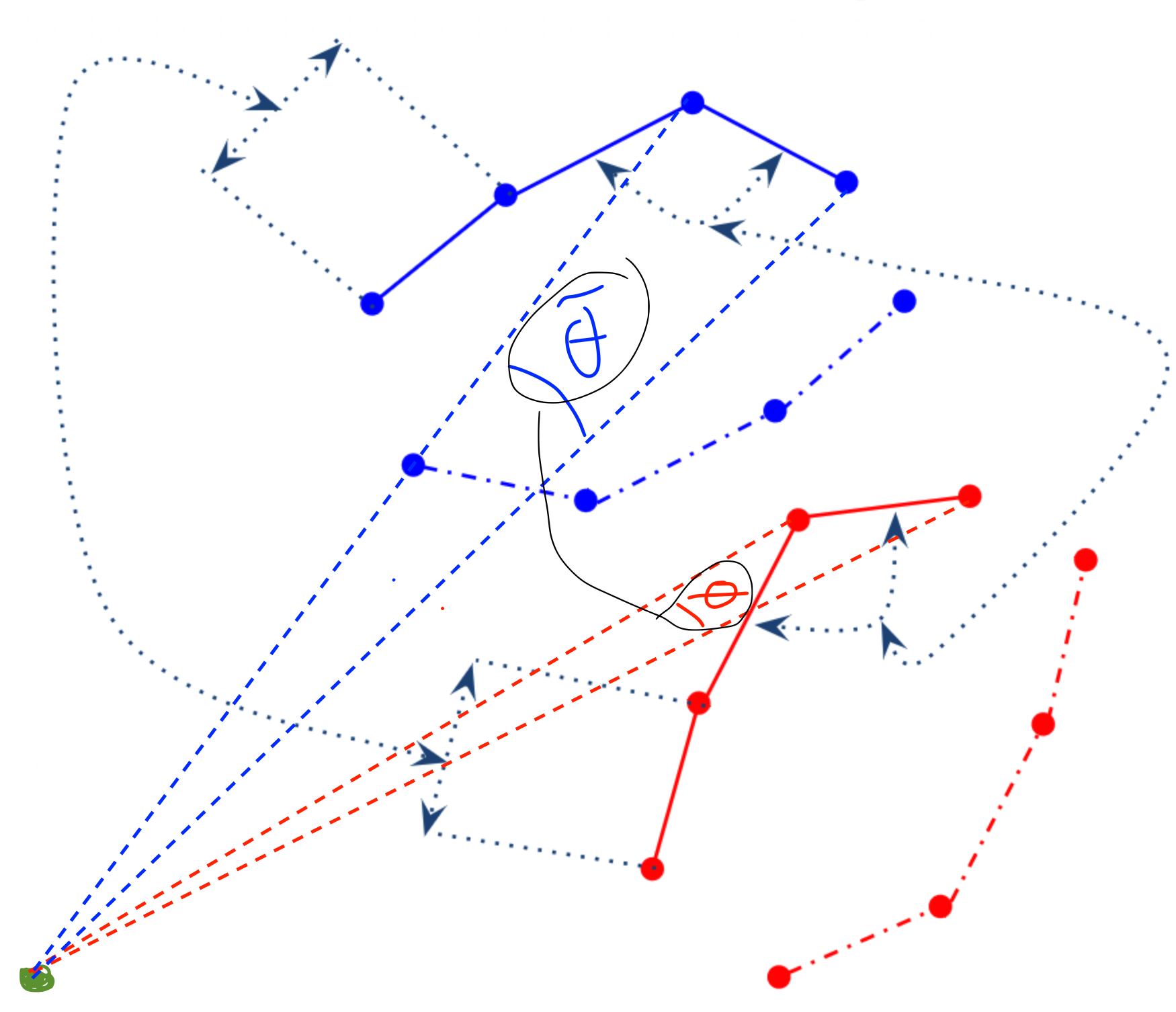Comments (3)
Thanks for asking:
For the first point:
It calcs the cosine similarity between two (nodes). Each node location can be seen as a vector and we calc the the cosine angle between both. Your interpretation is correct and the figure should be updated.
So we are comparing these two angles:

For the second point:
We used relative velocity with the first point as a normalization method for the trajectories. So in a sense it is velocities.
from social-implicit.
Thank you very much for the clarification and figure.
One last question, if V_pred and V_target are velocities, is the calculation G-distance loss at
Line 112 in b213529
consistent with the description in the above figure? We are not matching the intra-distance between the locations
I think for g-distance loss, the V_pred_min_ and V_target_ in line 112 should be absolute points instead of velocities. Please correct me if I'm wrong.
from social-implicit.
We are dealing with velocities from normalization point of view but originally they are distance.
The normalization of trajectories can be done by:
1- Relative difference between steps = velocity per each step
2- Divide by a fixe large amount = keep distance
3- Difference with origin point or last point = velocity w.r.t to the origin or last point
In our case, we do the matching between intra velocities vector, but one can change it based on normalization choice. For example, if I used the abs positions it will explode the gradients. Overall, you are correct in your interpretation but I wanted to highlight the issue of normalization and it is impact on describing the intent of the loss function design.
from social-implicit.
Related Issues (11)
- How to generate predictions from the model in the format required for the align.py file.
- cluster the motion of pedestrians
- Data Science 3
- About the results on the SDD dataset HOT 3
- Calculation of AMV HOT 1
- About Visualization in papers HOT 2
- How to visualize multiple trajectories at the same time? HOT 1
- Problem about visualization data. HOT 3
- How to evaluate AMD/AMV for the other models? HOT 1
- problem about pip3 install -r requirements。txt
Recommend Projects
-
 React
React
A declarative, efficient, and flexible JavaScript library for building user interfaces.
-
Vue.js
🖖 Vue.js is a progressive, incrementally-adoptable JavaScript framework for building UI on the web.
-
 Typescript
Typescript
TypeScript is a superset of JavaScript that compiles to clean JavaScript output.
-
TensorFlow
An Open Source Machine Learning Framework for Everyone
-
Django
The Web framework for perfectionists with deadlines.
-
Laravel
A PHP framework for web artisans
-
D3
Bring data to life with SVG, Canvas and HTML. 📊📈🎉
-
Recommend Topics
-
javascript
JavaScript (JS) is a lightweight interpreted programming language with first-class functions.
-
web
Some thing interesting about web. New door for the world.
-
server
A server is a program made to process requests and deliver data to clients.
-
Machine learning
Machine learning is a way of modeling and interpreting data that allows a piece of software to respond intelligently.
-
Visualization
Some thing interesting about visualization, use data art
-
Game
Some thing interesting about game, make everyone happy.
Recommend Org
-
Facebook
We are working to build community through open source technology. NB: members must have two-factor auth.
-
Microsoft
Open source projects and samples from Microsoft.
-
Google
Google ❤️ Open Source for everyone.
-
Alibaba
Alibaba Open Source for everyone
-
D3
Data-Driven Documents codes.
-
Tencent
China tencent open source team.

from social-implicit.